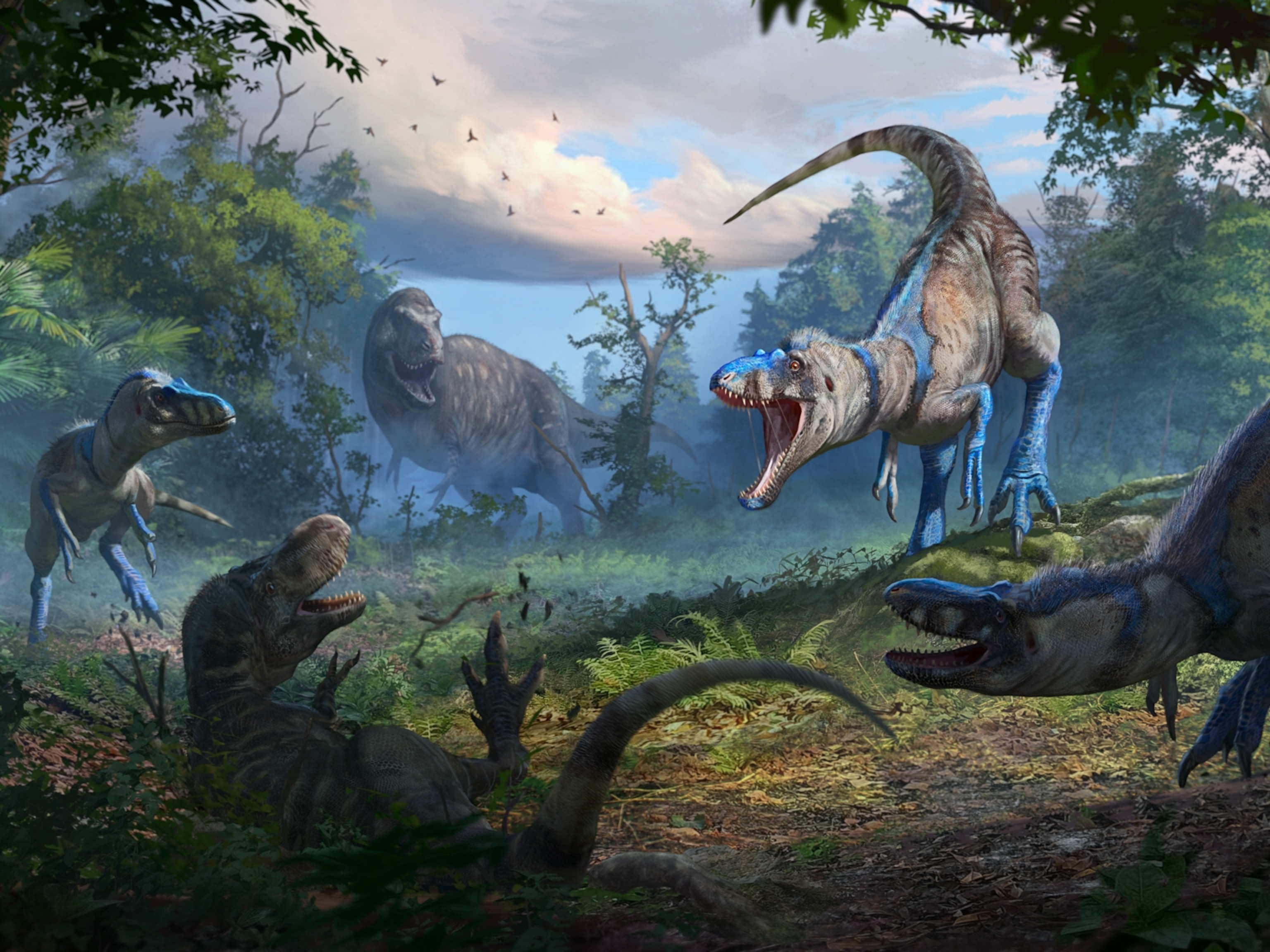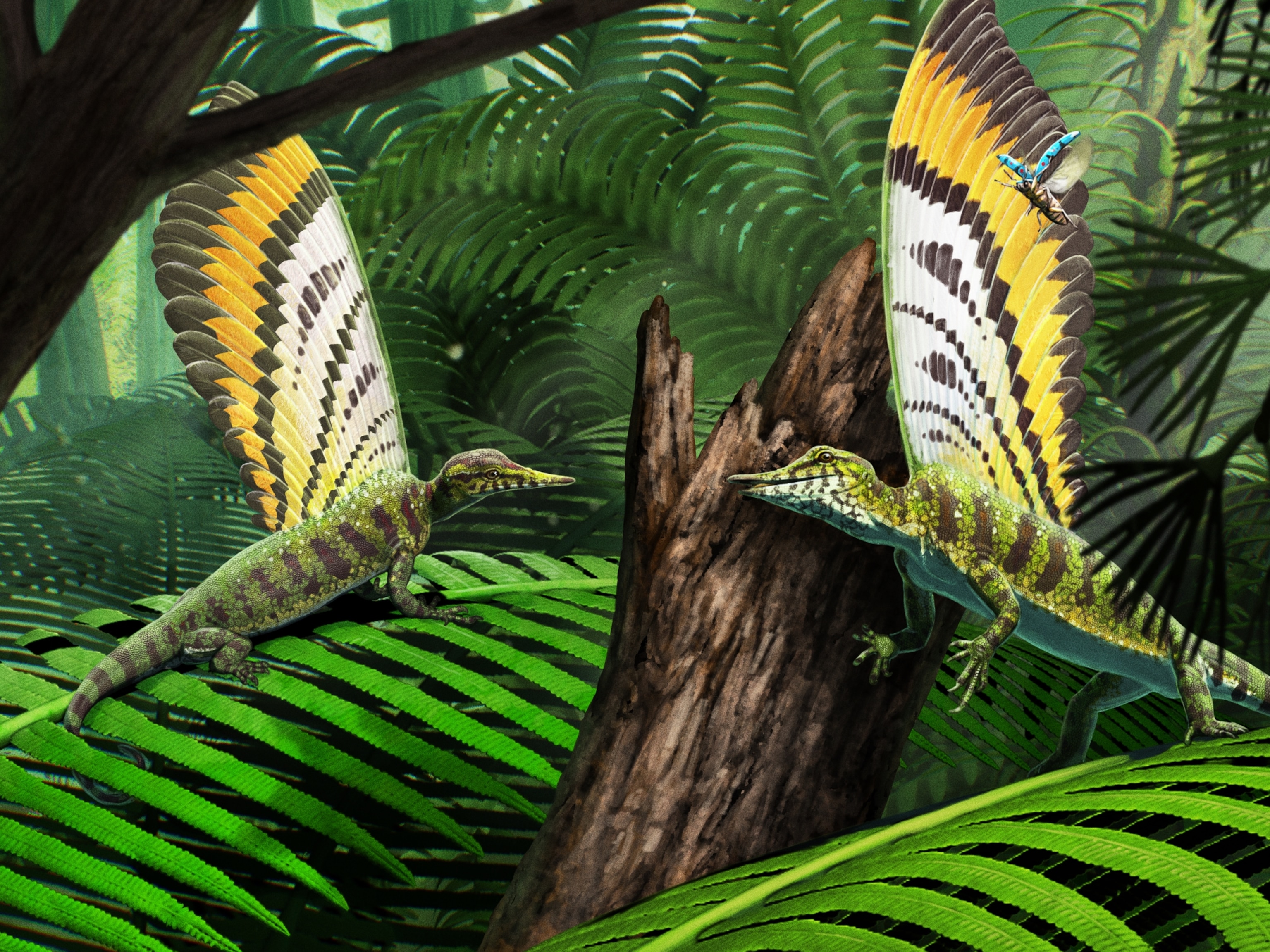The 80-foot-long Ichthyotitan was the killer whale of its time
Jawbone fossils suggest Ichthyotitan severensis may have been the largest ichthyosaur yet known—and hunted prey much like orca.

Ichthyotitan severensis was an absolutely immense ichthyosaur. Apex predators, ichthyosaurs were the orcas of their time, stalking the seas more than 201 million years ago, during the Triassic period.
Estimated to be more than 80 feet in length, paleontologists believe Ichthyotitan could be the largest ichthyosaur ever discovered.
Ichthyotitan’s discovery dates to 2018, when University of Bristol paleontologist Dean Lomax and his team described a piece of ichthyosaur bone that had been found in the United Kingdom. It was so big that it had previously been mistaken for a dinosaur bone. “When we first described the first specimen, I was hopeful more specimens would come to light,” Lomax says.

He got his wish. In 2020, fossil enthusiasts Ruby and Justin Reynolds found a second hunk of ichthyosaur jaw in Somerset, England. The father-daughter pair started to read around to try and work out what they found. In the process, they stumbled on Lomax’s 2018 paper and, sensing a match, got in touch.
Better-preserved than the first specimen, the second jaw piece allowed Lomax and his team to confirm both giant bones belonged to the same enormous species.
Lomax and his colleagues describe the fossils in a 2024 paper published in the journal PLOS ONE. Dubbed Ichthyotitan severensis, the creature’s name is both a reference to its apparent size and the River Severn Estuary, where the second jaw fragment was discovered.
(Sharp-toothed Thalattoarchon was the first ruler of the Triassic seas)

Estimated size
Scientists will need more fossils to suss out exactly how Ichthyotitan differed from other ichthyosaurs. However, the species offers a fresh picture of life during a time and in a part of the world where such giants haven’t been found before.
The fossil comes from the tail end of the Triassic period, “a notoriously a black box for the ichthyosaur fossil record,” says Vanderbilt University paleontologist Neil Kelley, who was not involved in the 2024 study.
(Giant ‘sea monster’ fossil is one of the largest of its kind)
All other giant ichthyosaurs discovered before this were found in older rocks in North America and Asia, he notes—which increases the likelihood that Ichthyotitan is an entirely new species.
Even though the animal was undoubtedly huge on the basis of the six-foot-long jaw bones alone, the paleontologists sound a note of caution on the exact dimensions of Ichthyotitan, especially without a complete skull. To date, the reptile is only known from two bones that made up part of the lower jaw, called the surangular.
If Ichthyotitan had similar body proportions to other giant ichthyosaurs found elsewhere in the world, such as Shonisaurus, then the animal would have exceeded 80 feet in length and been comparable in size to a fin whale, making it one of the largest marine reptiles.
It may seem strange that a large animal would leave behind such paltry remains. But it’s difficult to uncover complete fossils of giant ichthyosaurs. “It might be due to their ecology and where they were living in the open ocean,” Lomax says, as the bodies of such creatures would have been exposed to scavengers for longer. At least one of the Ichthyotitan jaws even shows signs that it had been nibbled before burial.
(Incredible ancient dolphin-like fossil still has skin and blubber)
With luck, future discoveries will fill out the form of Ichthyotitan. While its exact dimensions may change, there’s no doubt that the ichthyosaur was one in a long line of giants.
There’s growing evidence that ichthyosaurs evolved giant species within about eight million years after they first emerged during the Triassic. Many of them were monstrous predators that hunted other marine reptiles and any other prey smaller than themselves, almost as if they were giant orcas.
Ichthyotitan diet
Such supersized reptiles would have required a great deal of food. The existence of multiple giant ichthyosaurs over tens of millions of years indicates something about the nature of Earth’s Triassic oceans.
“The fact that they achieved such gigantic sizes suggests that there must surely have been productive food webs to support them throughout the Triassic,” Lomax says.
(Ichthyosaurs didn’t slurp squid, after all)
New forms of plankton were evolving in the Triassic, Kelley adds, which form the basis of ocean food webs and might have underwritten ecosystems capable of hosting giants. Both researchers note that more research will be needed to investigate why ichthyosaurs repeatedly evolved to giant sizes.
None of these giants survived the Triassic, however. Some later ichthyosaurs in the Jurassic were big, some even reaching more than 30 feet in length, but none attained the sizes of their Triassic predecessors.
(13-foot marine predator found inside another’s belly in shocking fossil ‘turducken’)
Ichthyotitan was not only one of the largest, but also one of the last of the truly giant species before the Triassic ended with a devastating mass extinction 201 million years ago.
Ultimately, this find indicates that ichthyosaurs were not in decline prior to this extinction event, Kelley notes, but instead were flourishing right until the ecological calamity hit.
The end-Triassic extinction is one of the notorious Big Five extinction events that paleontologists have identified in the fossil record. Incredible volcanic outpourings altered the global climate, the chemistry of the seas, and more.
(The 30-foot sea cow quickly hunted to extinction because of its tasty meat)
Ichthyosaurs as a group survived, but the giants did not. “These enormous ichthyosaurs ruled the seas right up until the global extinction event,” Lomax says.
In fact, marine creatures of their size would not evolve again until aquatic whales began to become larger—millions of years after ichthyotitan stalked the oceans.








